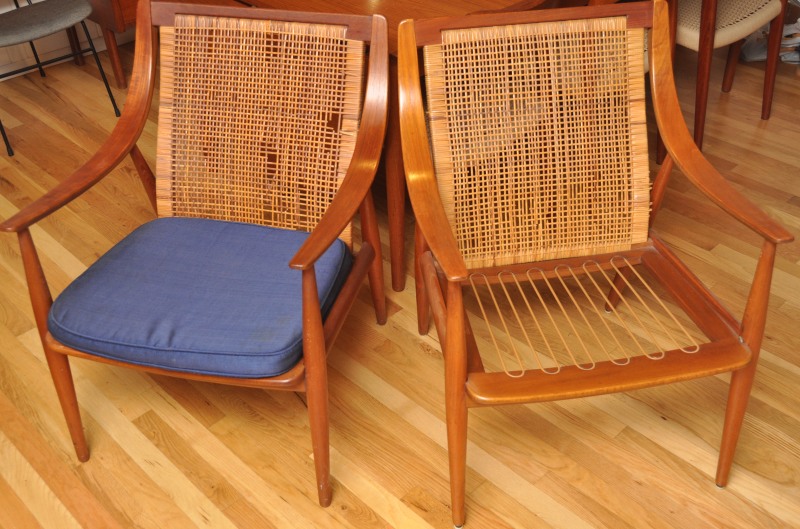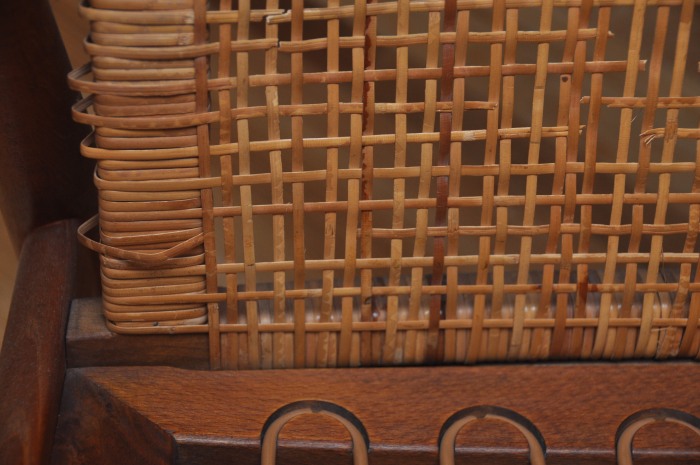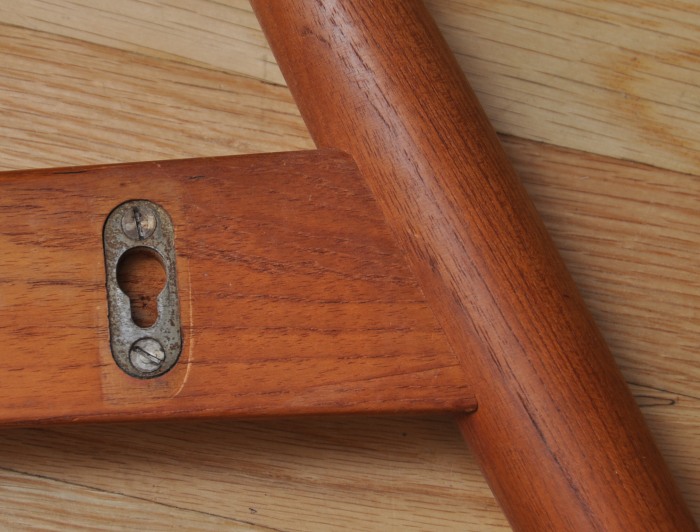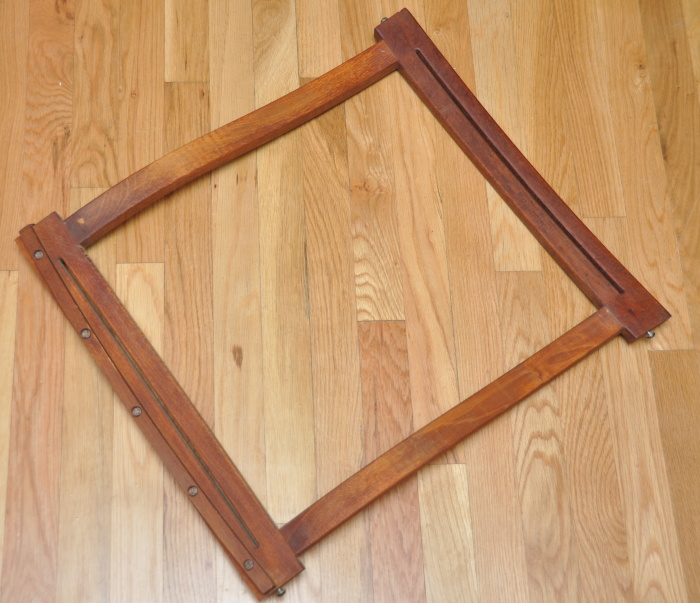This tutorial shows how to weave a new seat backrest on a Peter Hvidt armchair using 4mm binding cane (rattan). Binding cane comes in many different sizes. The technique I am using replicates the manner in which one of my two Hvidt armchairs was originally woven. However, there are three different weaving techniques I have seen used on this same model of Hvidt chair, so there are a number of ways that a seat can be woven, even when the end result looks the same (the image of the pair of chairs seen below were both woven with different techniques). The method I chose to use is probably the easiest for someone who has not woven a chair seat with binding cane before.
Additionally, there are quite a few other Danish mid-century Modernist chairs that are woven with rattan, including many by Hans Wegner, Hans Olsen, Ib Kofod Larsen, etc., which are woven in different styles than the one used on my Hvidt chairs. If you have one of these other chairs the method of weaving I am illustrating in this tutorial may not apply directly to how yours was done, although it is likely that some of the same principles are going to apply. In that case, it will be important and helpful if you can carefully dissect the old original weaving on your chair as you remove it, with an eye towards figuring out how it was done. It can also be very helpful to use a digital camera to document how the weaving was done as you are removing it from the chair.

This image shows my two Peter Hvidt chairs with their worn out rattan, which has numerous breaks, and is now brittle from a half century of age. At this point all that can be done is to completely remove the old weaving and replace it.



